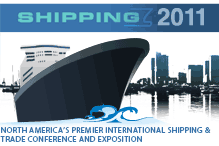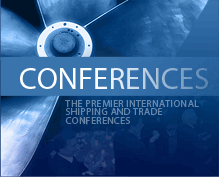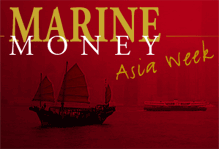
Is Two Is Better Than One?
In an effort to unlock value, the management of Golar LNG Ltd (“Golar”) has decided to split the company into two, following the precedent set by Teekay. The namesake will remain a traditional long-term, low risk, high yield LNG shipping charter company. It will retain 2 LNG carriers and 3 FSRU units on long-term charters to solid counterparties. With forward revenues of $1.9 billion, long-term financing in place and limited capex, the company has high dividend capacity. In addition the company will own a controlling stake in the new entity, Golar LNG Energy (“Energy”), which diversifies itself away from pure LNG shipping exposure by taking a larger part in the value chain, by providing innovative and flexible solutions in the LNG upstream and midstream segments.
This company will incorporate project development activities together with the operation of vessels directly exposed to the spot/short-term market. Specifically, the company will focus on regasification projects, liquefaction and the transport and trading of LNG. The transportation business will operate four owned 2003-2008 built vessels of which three are on spot related contracts to Shell. With these vessels, the company has secured capacity for its own FSRU and liquefaction projects. The company also acquires four 1970s built vessels, which will continue to operate in the spot and medium term time charter market as LNG carriers but are being held for FSRU conversions. By controlling these older vessels, the company is well positioned to bid competitively with a short lead-time.
In the Market
As they say timing is everything. Knightsbridge Tankers is struggling with a poor VLCC market, with earnings declining on its spot vessel and a loss of profit sharing on two time-chartered vessels. Compounding this problem was its diversification move into two newbuilding capesize vessels, which were ordered for $162 million en bloc. The company has paid installments of $97.2 million consisting of $64.8 million in equity with the balance financed through a short-term bank facility due at delivery. The company has been able to arrange only $60 million in secured long-term bank financing and continues to seek financing for the balance.
To meet the shortfall, the company has suspended the dividend and will ask shareholders to approve an increase of the authorized share capital from $200 thousand (20 million shares) to $350 thousand (35 million shares). The company currently has an issued share capital of $170 thousand. In this respect, their timing might be excellent as the equity markets continue to remain open. With both newbuildings chartered for five years, and the bank debt market restricted, equity will likely be the bridge until it can be re-financed with debt when the banks return.
TOPS Goes Active
On Friday, Top Ships filed the prospectus supplement with respect to its Standby Equity Distribution Agreement with YA Global Master SPV making the deal effective. The offering has been downsized by approximately 17.8% to 57.9 million shares from the original registration statement that had incorporated 70.5 million shares.
Assuming the full issuance of 57.9 million shares are sold at a price equal to 97.25% of the stated price of $1.82, net proceeds to the company would approximate $102.4 million. On a pro forma basis this would reduce the ratio of debt to total capitalization from 60.1% to 52.4%.
Let the sales begin.
Old Ways Work Best
In what could be a milestone event, Star Bulk last week became the first shipping company to declare a dividend after having suspended it. The company has agreed to pay $0.05 per share, or approximately $2.5 million to its shareholders after receiving lender approval. In giving their consent, the banks took into account the company’s liquidity position, high contract coverage (100% for 2009 and 85% for 2010), low gearing (~44% of equity) and lack of exposure to newbuildings. The current cash position of $70 million covers the remainder of this year’s principal repayments, $23 million, as well as a substantial portion of next year’s ($60 million) with the shortfall being paid out of contracted cash revenues (~$350 million).
While the company took a step beyond traditional Greek ownership by going public, it remained traditional in the sense of avoiding newbuildings and running a middle age fleet. It’s hard to beat old formulas.
Hornbeck Seizes Opportunity
Last Thursday, Hornbeck Offshore Services (“Hornbeck”) announced that it agreed to sell $250 million aggregate principal amount of its 8% Senior Notes due 2017 in a private placement pursuant to Rule 144A. Based upon demand, the offering was upsized by $50 million from the original transaction size announced the day prior. J.P. Morgan, Wells Fargo, Jefferies and Goldman Sachs were the joint lead book runners. Capital One, Comerica, DnB NOR and Fortis were also involved.
The net proceeds of approximately $237.3 million from the sale will be used to repay debt under the company’s revolving credit facility, which amounts may be re-borrowed. The remaining net proceeds will be used for general corporate purposes, which may include the retirement of other debt.
There Is Still No Simple Answer
Like the number of newbuildings that will be delivered, another question that remains unanswered is what is a ship worth today. This is critical information especially for the many companies in discussions with their banker’s with respect to compliance with loan covenants. One owner describes it’s situation as follows:
“The Trustee-Manager considers it appropriate to adopt the going concern basis as all its container vessels are leased out on long-term, fixed-rate charters which are valued higher than the current charter-free vessels. In addition, there is no universal method of valuation and all valuations obtained under the current economic condition are subject to various assumptions which have not been agreed upon unanimously by all parties especially shipowners, ship financiers, brokers and valuers.”
This particular owner’s situation is ready made for a discounted cash flow valuation, which is the basis for the Long Term Asset Value model developed by the Hamburg Shipbrokers Association. This model has not caught on so the industry idea of value remains focused on a liquidated value or at least a sale between willing buyer and seller. We find it amusing that on the other side, bankers are arguing that there is no market for the exotic structures they bought and since they will hold onto them they need not be marked down to market. Why can’t an owner make the same promise?
Watson, Farley & Williams LLP Advises in High Profile KOGAS Project Financing
The Singapore office of Watson, Farley & Williams LLP (“WFW”) advised on the high profile Korea Gas Corporation (“KOGAS”) refinancing for three 1999 built LNG carriers. The 138,200 cbm built LNG carrier “Hanjin Muscat” is on bareboat charter to Hanjin Shipping Co., Ltd, the 138,100 cbm built LNG carrier “SK Summit” is on bareboat charter to SK Shipping Co., Ltd. and the 135,000 cbm built LNG carrier “Hyundai Technopia” is on bareboat charter to Hyundai Merchant Marine Co., Ltd. All three LNG carriers are operating under long term contracts of affreightment with KOGAS. Continue Reading
Unveiling China Shipbuilding Industry Corporation
While corporate governance and transparency have much room for improvement in China, we do applaud the concerted efforts state-owned companies make whenever they plan to raise public money. China Shipbuilding Industry Corporation’s latest public offering gives us an excellent opportunity to take a closer look behind the façade of one of China’s most established shipbuilding groups at a time when China’s shipbuilders will play a key in the future of our industry.
As early as 2007 when the global shipbuilding industry was arguably at its peak, China Shipbuilding Industry Corporation (“CSIC Group”) started preparations for a listing in Shanghai, but the process of restructuring turned out to be quite a challenge on its own. The listed entity was eventually determined to be the newly incorporated China Shipbuilding Industry Company Limited (“CSIC”) and is owned by CSIC Group (97.21%), state-controlled steel maker Angang Steel Company Limited (2.15%) and state-owned China Aerospace Science and Technology Corporation (0.64%). Continue Reading
Old Face, New Place
Loli Wu, Citi‘s talented ship finance executive is the latest professional to make a career move, as our industry works its way through the current economic turmoil. Mr Wu moves from Citi to BofA Merrill Lynch and Matt Thomson‘s team in NY.
Such moves are not uncommon benefiting the professional, the new employer and even the previous employer who has the chance to reward others working with but just behind the team leader.
More importantly the industry benefits.
The Question
Last week at lunch, an extremely sharp and knowledgeable investment banker challenged us to find the shipping equivalent of the Holy Grail. In this instance it would be the answer to the pressing question that is on everyone’s mind these days – what percentage of the newbuilding orderbook will in fact be delivered? This question can be answered on many levels – theoretically, politically and statistically.
Everyone has their ideas and numbers are bandied about by everyone and cover a full gamut of possibilities. A simple answer, with a high degree of probability, is all of them, another friend suggested. If the banks are essential to the fabric of the West, are not the shipyards, a key to the financial well-being of the East. Why won’t the governments stand behind the shipyards? China has indicated it would, and like Japan in the 1980s they would benefit from low freight rates, having become the world’s center of manufacturing with an insatiable demand for raw materials and a need to export its finished goods.
Another way to answer the question is to look at the interests of the parties involved.







